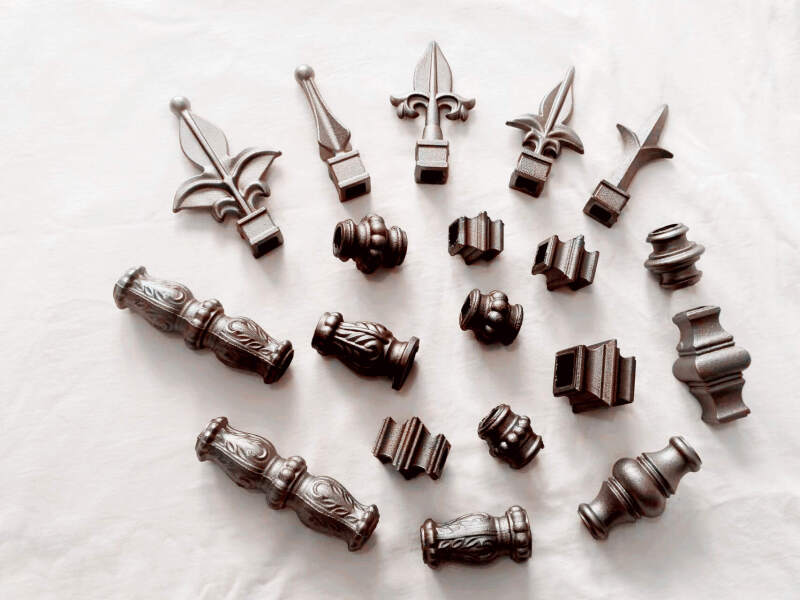
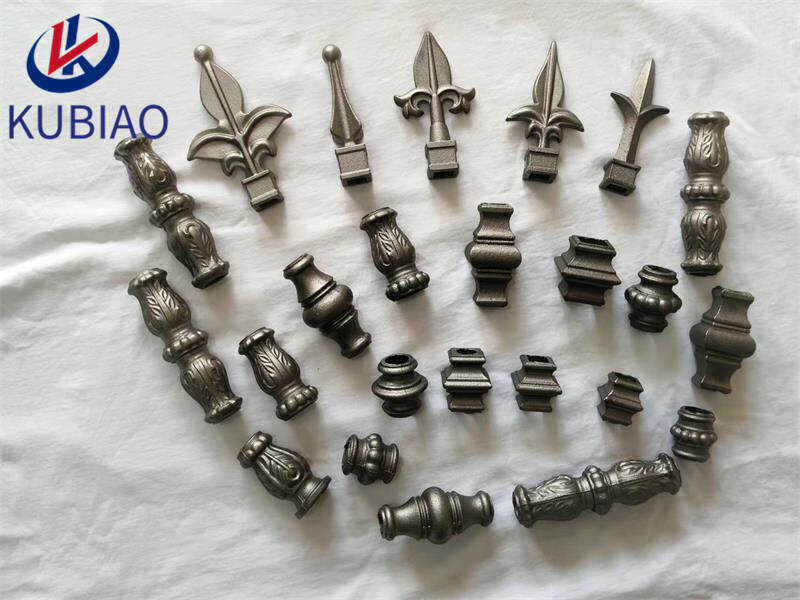
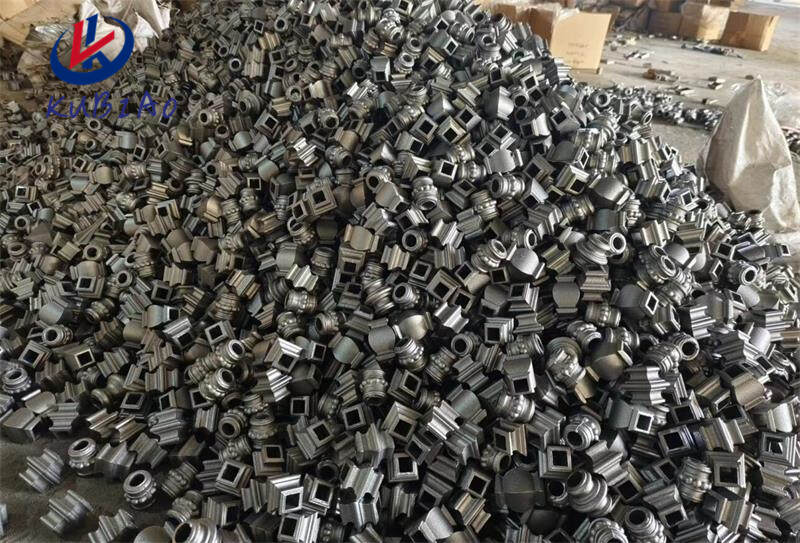
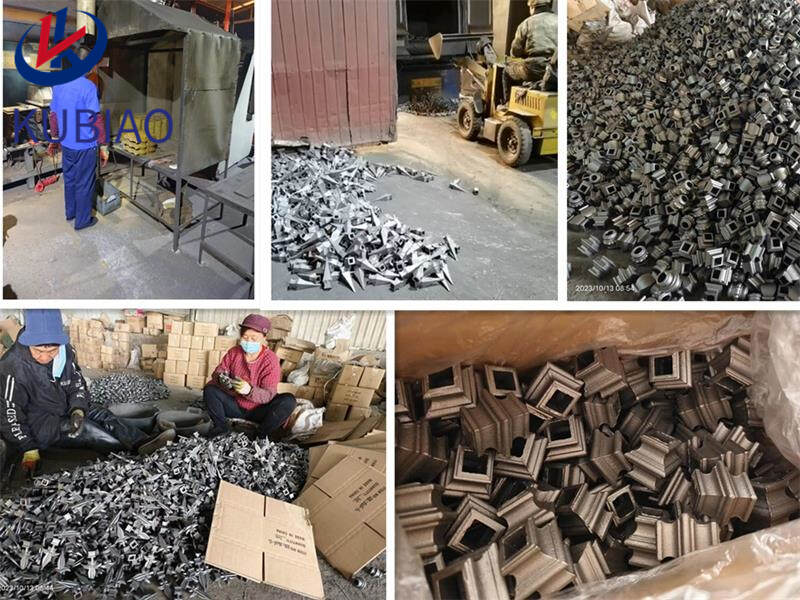
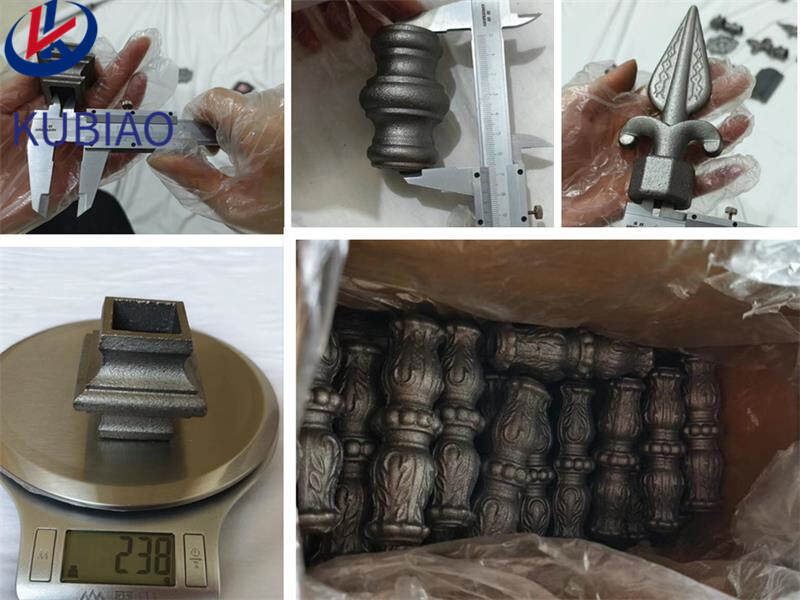
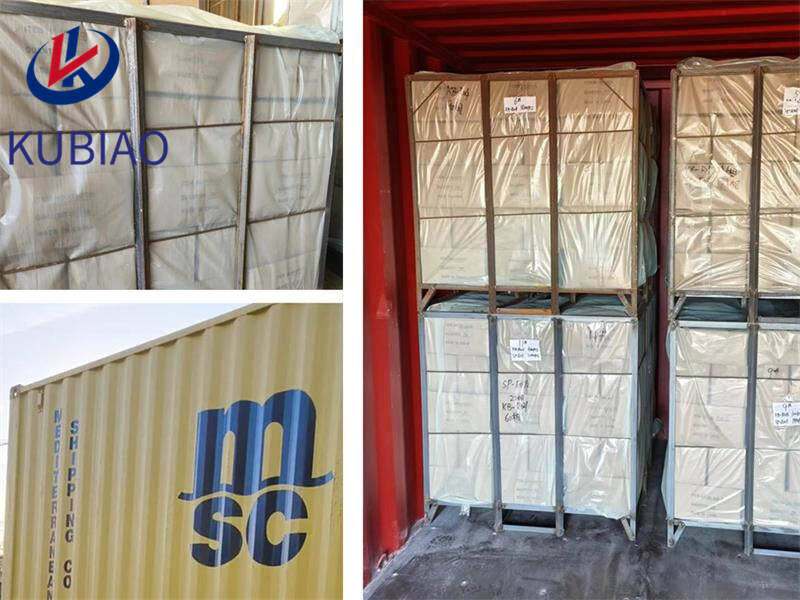
| Product name | casting gate parts |
| Keyword | metal fence ornament ,decorative spear point ,fence post collar,cast iron leaf,ornamental iron fence finials,decorative fence stud,casting stud |
| Place of Origin | China |
| Quality standard | We have our own professional QC team to insure the quality. |
| Feature | Cast iron is a strong metal material that can withstand large amounts of pressure and weight. It is also durable and resistant to corrosion, making it ideal as a decorative item |
| Application scope | Party, etc. |
| surface treatment | sand blasting antirust antirust oil/water painting hot dip galvanizing |
| Unit Weight(g) | 429(Contact us for specific information to confirm) |
| terms of payment | 50% T/T in advance, balance before shipment. |
| Life span | 28 years (Contact us for specific information to confirm) |
| delivery time | It usually takes 40 days. |
| Advantage | We keep good quality and competitive price to ensure our customers benefit |
| Packing | 16x8.6x16.5cm(Contact us for specific information to confirm) |
| OEM/ODM | Customization Service Provided |
| design | beautiful elegance sleek pretty |
| Sales country | All over the world for example:El Salvador,Mozambique,Timor-Leste,Tuvalu,Venezuela,Anguilla |
| MOQ | 257pcs(Contact us for specific information to confirm) |
1.Can I paint or modify casting gate parts ?
Our mission is to provide customers with the best solutions for casting gate parts .
Yes, you can paint or modify cast iron ornaments. However, it is important to properly prepare the surface before painting to ensure the paint adheres well. This may include sanding, priming, and using a rust-inhibiting paint. Additionally, if you plan to modify the ornament, make sure to use appropriate tools and techniques to avoid damaging the cast iron.
2.What are the origins of cast iron ornament production?
We focus on teamwork and communication to achieve common goals, We attach great importance to this detail.
The production of cast iron ornaments can be traced back to the 18th century in Europe, particularly in England and France. During this time, cast iron was becoming a popular material for architectural and decorative elements due to its strength, durability, and ability to be molded into intricate designs.
The Industrial Revolution in the 19th century further fueled the production of cast iron ornaments, as advancements in technology and manufacturing processes made it easier and more cost-effective to produce these decorative pieces. Cast iron ornaments were used extensively in the construction of buildings, bridges, and other structures, as well as in furniture and household items.
The popularity of cast iron ornaments continued to grow throughout the 19th and early 20th centuries, with the rise of the Victorian era and its emphasis on ornate and elaborate designs. However, the production of cast iron ornaments declined in the mid-20th century with the introduction of new materials and construction methods.
Today, cast iron ornaments are still produced and used in various architectural and decorative applications, but they are often considered a symbol of the past and are highly valued for their historical and aesthetic significance.
3.What is the weight limit for hanging casting gate parts ?
We have broad development space in domestic and foreign markets. casting gate parts have great advantages in terms of price, quality, and delivery date.
The weight limit for hanging cast iron ornaments can vary depending on the strength and stability of the hanging mechanism and the thickness and quality of the cast iron. In general, it is recommended to not exceed 10-15 pounds for hanging cast iron ornaments. It is always best to check the specific weight limit recommended by the manufacturer or consult with a professional for heavier or larger ornaments.
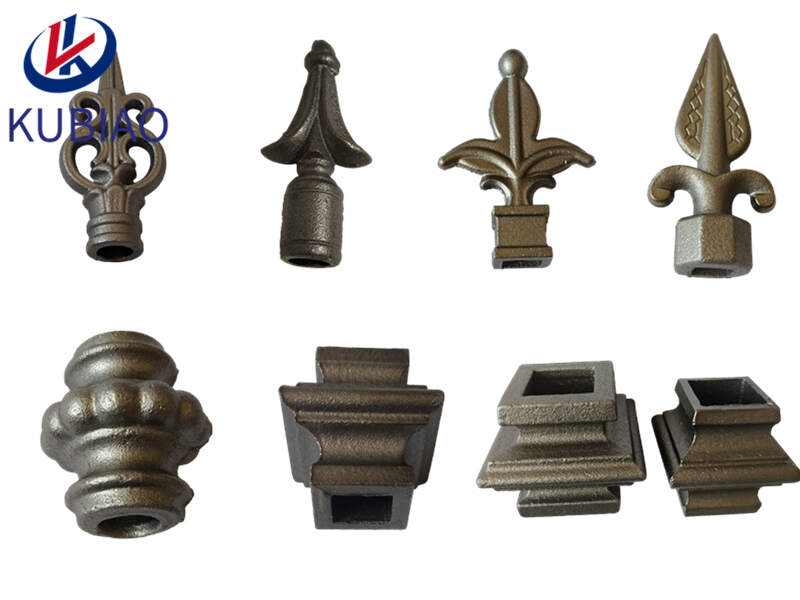
4.How do I protect casting gate parts during extreme weather conditions?
We focus on providing high casting gate parts quality products and services.
1. Apply a protective coating: Before extreme weather hits, apply a protective coating to your cast iron ornaments. This can be a clear sealant or a coat of paint specifically designed for metal surfaces. This will create a barrier between the ornament and the elements, preventing rust and corrosion.
2. Bring them indoors: If possible, bring your cast iron ornaments indoors during extreme weather conditions. This will protect them from rain, snow, and harsh winds. If you have a covered porch or patio, you can also move them there for added protection.
3. Cover them up: If bringing the ornaments indoors is not an option, cover them with a tarp or plastic sheeting. This will protect them from direct exposure to rain and snow. Make sure to secure the cover tightly to prevent it from blowing away in strong winds.
4. Keep them off the ground: If your ornaments are placed on the ground, they are more susceptible to damage from moisture and freezing temperatures. Elevate them on a pedestal or stand to keep them off the ground and away from standing water.
5. Remove snow and ice: If your ornaments do get covered in snow or ice, make sure to remove it as soon as possible. The weight of snow and ice can cause damage to the delicate details of the ornament and can also lead to rusting.
6. Regular maintenance: Regularly inspect your cast iron ornaments for any signs of damage or rust. If you notice any issues, address them immediately to prevent further damage.
7. Store them properly: If you live in an area with extreme weather conditions, consider storing your cast iron ornaments indoors during the off-season. This will protect them from prolonged exposure to harsh elements and extend their lifespan.
5.What are some common misconceptions about casting gate parts ?
Being one of the top casting gate parts manufacturers in China, We attach great importance to this detail.
1. They are fragile: Many people assume that cast iron ornaments are delicate and can easily break. However, cast iron is a strong and durable material that can withstand harsh weather conditions and heavy use.
2. They are expensive: While some cast iron ornaments may be pricey, there are also many affordable options available. Additionally, their durability and longevity make them a cost-effective choice in the long run.
3. They are only suitable for traditional or rustic styles: Cast iron ornaments are often associated with traditional or rustic decor, but they can also add a touch of elegance and sophistication to modern or contemporary spaces.
4. They are difficult to maintain: Some people believe that cast iron ornaments require a lot of maintenance and upkeep. However, with proper care and occasional cleaning, they can last for many years without any issues.
5. They are all the same: Cast iron ornaments come in a variety of designs, sizes, and finishes. They can be intricately detailed or simple and sleek, making them suitable for different styles and preferences.
6. They are only for outdoor use: While cast iron ornaments are commonly used in outdoor spaces, they can also be used indoors to add a unique and decorative touch to any room.
7. They are heavy and difficult to install: While cast iron ornaments can be heavy, they are not necessarily difficult to install. Many come with mounting hardware or can be easily hung with screws or nails.
8. They are only for decorative purposes: While cast iron ornaments are often used for decorative purposes, they can also serve functional purposes such as supporting plants or serving as bookends.
9. They are prone to rust: While cast iron can rust if not properly cared for, many modern cast iron ornaments are coated with a protective finish to prevent rusting.
10. They are outdated: Cast iron ornaments have been used for centuries and have stood the test of time. They continue to be a popular choice for home decor, making them far from outdated.
6.Are there any DIY techniques for creating my own casting gate parts ?
We have a good reputation and image in the industry. The quality and price advantage of casting gate parts products is an important factor in our hard overseas market.
1. Sand Casting: This method involves creating a mold using sand and pouring molten cast iron into it. You can use a wooden pattern or a 3D printed mold to create intricate designs. Once the iron has cooled and solidified, the sand can be removed to reveal the ornament.
2. Clay Casting: Similar to sand casting, this method involves creating a mold using clay instead of sand. The clay can be molded into any shape or design and then coated with a layer of sand before pouring in the molten iron. Once cooled, the clay can be removed to reveal the ornament.
3. Lost Wax Casting: This technique involves creating a wax model of the ornament and then coating it with a layer of ceramic. The wax is then melted out, leaving a hollow ceramic mold. Molten iron is then poured into the mold and once cooled, the ceramic can be broken away to reveal the ornament.
4. Repurposed Molds: You can also use existing objects such as cookie cutters, silicone molds, or even household items like bottle caps or keys to create unique cast iron ornaments. Simply pour the molten iron into the mold and let it cool before removing the ornament.
5. Sandpaper Etching: If you don't have access to molten iron, you can still create a cast iron look by using sandpaper to etch designs onto a piece of metal. You can then paint the metal with a rust-colored paint to give it an aged look.
6. Welding: If you have some welding skills, you can create your own cast iron ornaments by welding together pieces of scrap metal. You can use a grinder to smooth out any rough edges and give it a more polished look.
7. 3D Printing: If you have access to a 3D printer, you can design and print your own cast iron ornaments using a special filament that contains iron particles. Once printed, the ornament can be heated to fuse the iron particles together, giving it a cast iron appearance.
Remember to always take proper safety precautions when working with molten iron or welding equipment. It is also important to properly dispose of any leftover materials and follow local regulations for metalworking.
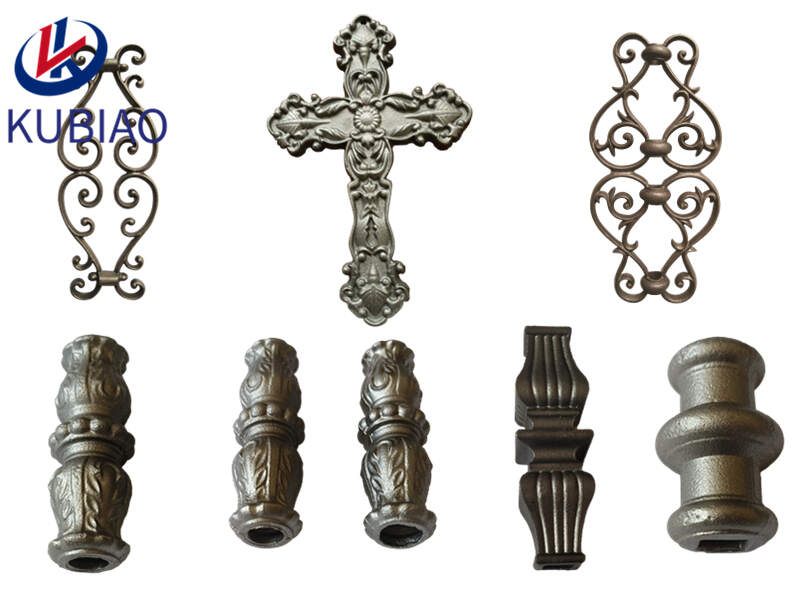
7.Can I use casting gate parts as part of a fireplace mantel display?
We continue to invest in research and development and continue to launch innovative products.
Yes, you can use cast iron ornaments as part of a fireplace mantel display. Cast iron ornaments can add a rustic and vintage touch to your mantel display and can be used to hold candles, vases, or other decorative items. Just make sure to properly secure them to the mantel to prevent any accidents.
8.How long do casting gate parts typically last?
We attach importance to the innovation ability and team spirit of employees, have advanced R & D facilities and laboratories, and have a good quality management system.
Cast iron ornaments can last for decades or even centuries if they are properly cared for and maintained. However, their lifespan can vary depending on factors such as exposure to harsh weather conditions, regular cleaning and maintenance, and the quality of the cast iron itself. With proper care, cast iron ornaments can last for generations.
9.Can I customize my own casting gate parts ?
We are centered on customers and always pay attention to customers' needs for casting gate parts products.
Yes, you can customize your own cast iron ornaments by using a variety of techniques such as painting, engraving, or adding embellishments. You can also create your own design or use a pre-made template to personalize the ornament. Additionally, you can choose the shape, size, and finish of the ornament to make it unique to your preferences.
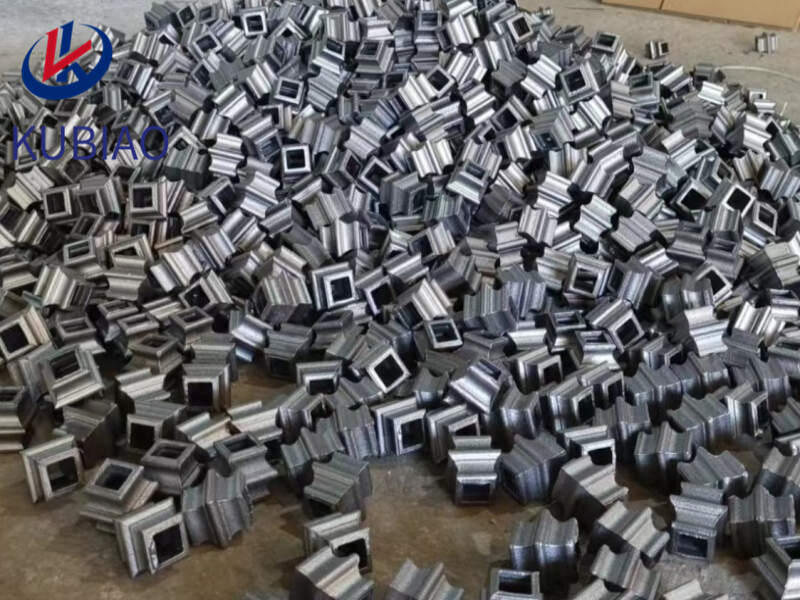
10.Are there any collectible casting gate parts ?
We have a professional team that is committed to the innovation and development of casting gate parts .
Yes, there are many collectible cast iron ornaments available. Some popular examples include vintage cast iron doorstops, bookends, figurines, and holiday decorations. These items are highly sought after by collectors due to their historical significance, intricate designs, and durability. Some well-known brands that produce collectible cast iron ornaments include Hubley, Bradley & Hubbard, and Griswold.
11.What are the differences between casting gate parts and other metal decorations?
We have advantages in marketing and channel expansion. Suppliers have established good cooperative relations, continuously improved workflows, improved efficiency and productivity, and provided customers with high -quality products and services.
1. Material: The main difference between cast iron ornaments and other metal decorations is the material used. Cast iron ornaments are made from iron that has been melted and poured into a mold, while other metal decorations can be made from a variety of metals such as aluminum, brass, copper, or steel.
2. Weight: Cast iron ornaments are typically heavier than other metal decorations due to the density of iron. This can make them more durable and less likely to be blown over by strong winds.
3. Strength: Cast iron is known for its strength and durability, making cast iron ornaments more resistant to damage and wear compared to other metal decorations.
4. Rust resistance: Cast iron is prone to rusting, so cast iron ornaments may require regular maintenance to prevent rust. Other metal decorations, such as aluminum or stainless steel, are more resistant to rust and may require less maintenance.
5. Design options: Cast iron ornaments are limited in terms of design options due to the casting process. Other metal decorations can be formed into more intricate and detailed designs using techniques such as welding, bending, and cutting.
6. Cost: Cast iron ornaments tend to be more expensive than other metal decorations due to the cost of the materials and the labor-intensive casting process.
7. Versatility: Other metal decorations can be used both indoors and outdoors, while cast iron ornaments are primarily used for outdoor decor due to their weight and rust-prone nature.
8. Historical significance: Cast iron has been used for centuries in architectural and decorative elements, giving cast iron ornaments a sense of history and tradition that other metal decorations may not have.
12.Are casting gate parts weather-resistant?
We maintain a stable growth through reasonable capital operations, focus on industry development trends and cutting -edge technologies, and focus on product quality and safety performance.
Yes, cast iron ornaments are weather-resistant. They are made from a durable and strong material that can withstand various weather conditions, including rain, snow, and extreme temperatures. However, over time, they may develop rust if not properly maintained. It is recommended to regularly clean and seal cast iron ornaments to ensure their longevity and weather-resistance.
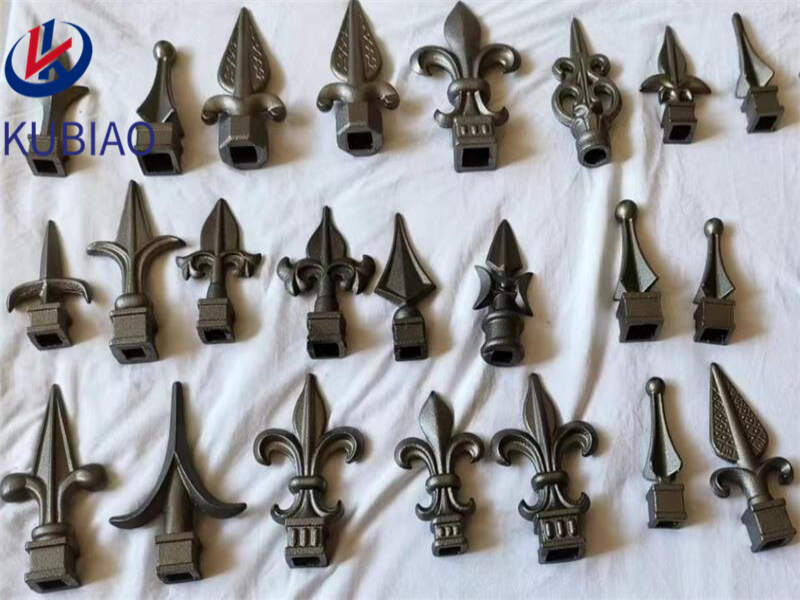
Welcome to contact us for Cast Iron Order!
Email: sales@kubiaometal.com
Cellphone/Whatsapp: 0086 13020588163
Wechat: 13028588163
Tag:cast iron crane garden ornaments,iron gate component ,iron casting collar ,fence decorative bases,casting elements ,ornamental spearheads
PREV: casting iron
NEXT: casting elements
Product
Category